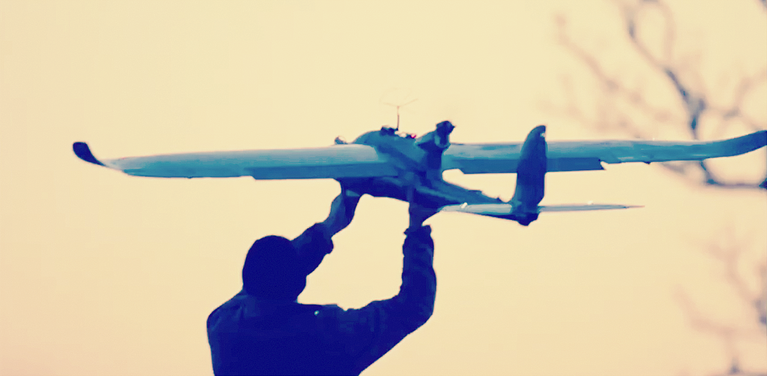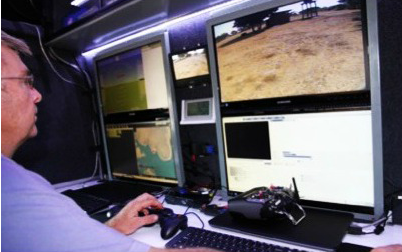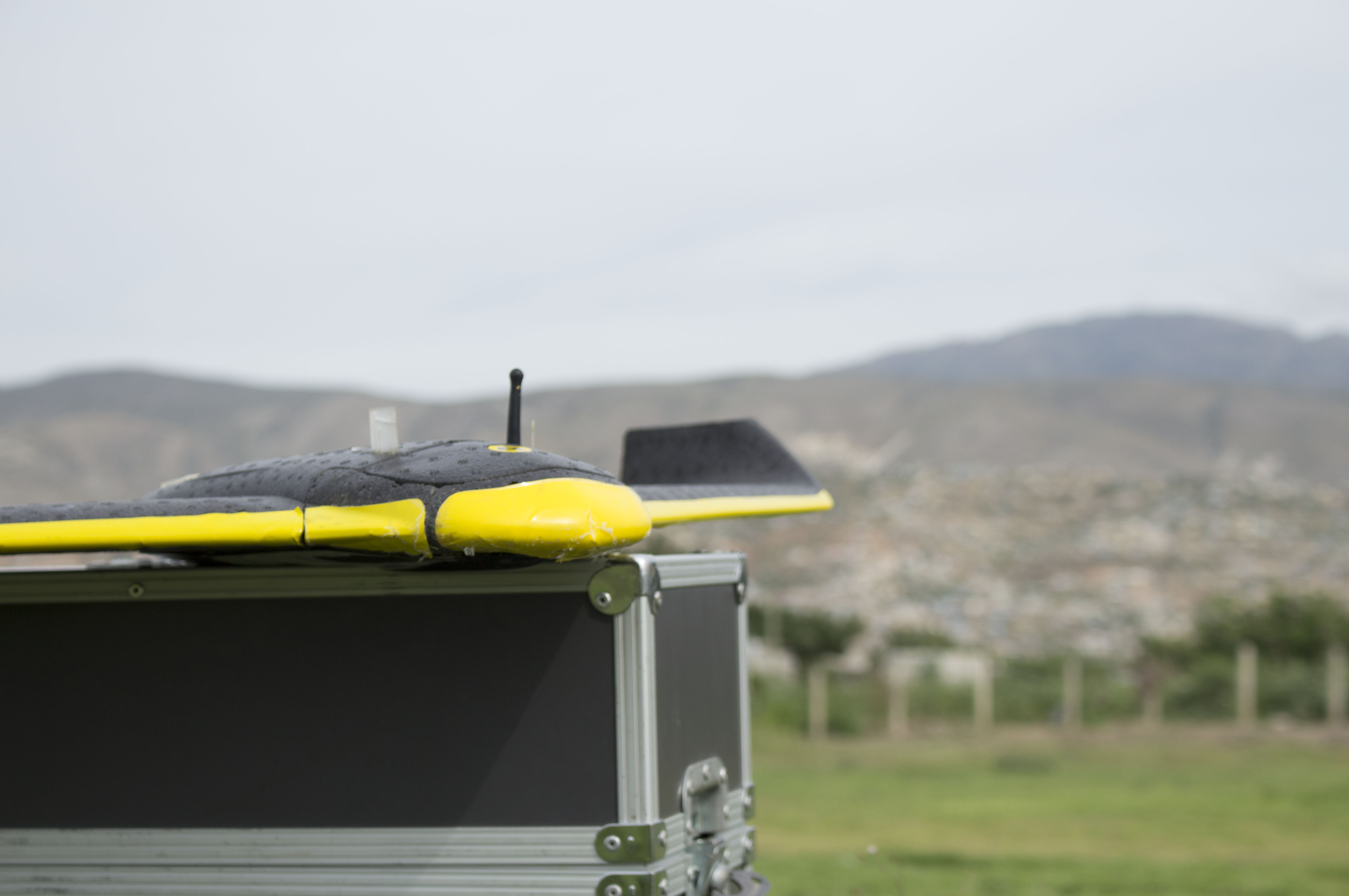Monitoring poaching in South Africa
In South Africa, non-profit Air Shepherd is using UAVs to stop poaching. Photo © Air Shepherd
Air Shepherd in South Africa
When John Petersen retired from the U.S. Naval Reserve in 1993, he knew wanted to use aviation to have a positive impact in the world. 23 years later, he couldn’t have imagined how technological advances would help solve a problem that has existed for decades.
In South Africa, Petersen, along with global aid foundation Air Shepherd, is using UAVs to help prevent the poaching of animals on reserves throughout the country.
Petersen was helping a representative from the Kenya Wildlife Service purchase night vision goggles when the subject of poaching came up. The representative explained just how difficult it is for park rangers to protect the animals.
“The rangers own the day, but the poachers own the night,” says Petersen.
The Problem
Poachers will often operate under very specific circumstances that are advantageous to them. Usually, they hunt late at night when there is a full moon in areas they know rhinos and elephants like to congregate. Watering holes are a common area where animals will gather exposing them to danger. At night, poachers are mobile, difficult to detect and have the ability to ambush rangers who patrol the reserves. Petersen, a Vietnam war veteran and avid aviator, recognized the potential of UAV technology to monitor illegal activities at night and reduce the number of animals being killed under these circumstances.
“It occurred to me that UAVs would solve the problem because they have infrared cameras on them and they can fly at night, and they can see the thermal images of poachers,” says Petersen.
“They’re also cheaper and they make less noise”
In 2007, Petersen was approached by the Lindbergh Foundation, a global charitable organization that solves international environmental problems through technological innovation, to be on their board of directors, and help address the issue of elephants being killed for their ivory. Animal ivory is a highly demanded commodity throughout the world, which has led to the poaching of hundreds of thousands of elephants and rhinos. Between 2010 and 2012, more 100,000 African elephants were illegally poached on reserves for their tusks. Annually, an average of 40,000 elephants and 1,200 rhinos are killed for their tusks.
Petersen approached different UAV manufacturers that specialize in making professional quality UAVs suitable for long flights and long range analysis. They eventually partnered with South African based company UAV and UAV Solutions LTD (UDS) to help them develop the UAV technology and sensors necessary to identify and track the movements of poachers at night.
“UDS had shown that they were capable of building the kind of equipment we needed,” says Petersen.
“They had also already invested $2 million dollars of their own money in research. We knew that it was a partnership that could work.”
The UAVs that UDS developed use predictive analysis that forecasts where poachers are likely to target animals. Using this data, they are able to program UAVs to fly over areas where a hunt is likely to take place. These UAVs are also equipped with infrared cameras that can easily identify poachers in the bush. This information is then relayed to rangers who patrol the reserves at night. If poachers are present in a particular area, the rangers already know and don’t drive into ambushes unprepared.
Stealth operations
In the field, the operating teams work out of a 4x4 vehicle equipped with a collapsed antenna on the roof that can be extended up to 9 metres broadcasting to a range of 30 kilometres. The planes are electric, silent and virtually invisible in the night sky.

Air Shepherd’s drone pilots monitor South Africa’s national parks at night. Photo © Air Shepherd.
Air Shepherd officially launched its program in March of this year, and it has had an immediate impact on poaching rates in Kruger National Park in as well as the Ezemvelo KwaZulu-Natal Wildlife reserve. Both of these parks are home to thousands of rhinos and elephants that are vulnerable.
“We can fly for a month or two months, and nothing gets killed,” says Petersen.
“Then the day after we stop, the poachers will start hunting again.”
The feedback from the park rangers regarding this technology has been positive also. At first, there was a sense that presence of the UAVs may threaten their jobs, but over time, the rangers have come to understand just how valuable a tool the UAVs are.
“They understand the benefits of having these things in the field with them,” says Petersen.
“They are less at risk now because we can tell them where the danger is and they can be prepared for it.”
So far, Air Shepherd has flown over 2000 hours on 1200 missions in reserves across South Africa. Petersen says that his long term goal is for Air Shepherd to develop enough teams to protect animal populations across the continent, and he has begun working with private gaming reserves in Zimbabwe, Botswana and Malawi to accomplish those goals.
“The rangers own the day, but the poachers own the night”
– John Petersen, Lindbergh Foundation Chairman
Planning for the future
Petersen also wants to provide a program that will train local pilots to use the technology in their home countries. This way, the technology will continue to add value to a community even if Petersen and his teams aren’t there. Western organizations often face criticism for bringing new technologies into the developing world and then leaving without empowering the people who live in those areas. Petersen wants to change that.
“After we leave, we want to leave a system in place with people who have been trained, have the equipment and adequate funding to continue on with this work,” Petersen said.
For now, the main obstacle to achieving these goals is funding. The 4x4 vehicles that contain the broadcasting and monitoring equipment cost around $100,000 each to equip, each UAV costs around $25,000 and pilots have to be trained both in how to fly the UAVs and interpret the images they see.
“You have to be able to tell the difference between an anthill and a human being,” says Petersen.
“Both are about the same size, and both look warm at night.”
Air Shepherd and the Lindbergh Foundation, are hoping that through private sponsorships and charitable donations, they can raise the nearly $30 million dollars it would take to run this program across the continent. It’s a lot of money, but Petersen feels that the cause is one that people are willing to get behind. Tourism is one of the major economic drivers in Africa, and people come to the continent primarily to experience the natural beauty of the landscape and see the animals. If the animals are constantly being killed, then those countries will suffer.
“People are excited about elephants and rhinos,” says Petersen. “Right now we’re operating at the intersection of these two very popular subjects with UAVs as the vehicle of effective change.”
“The fact that we’re effective is particularly appealing to people.”
More applications
Search and rescue in Nepal
Canadian relief agency Global Medic
using UAVS to coordinate its search
and rescue efforts overseas
Tracking migration in Haiti
In Haiti, cartographer Pressler Jean is using
his drone to track the migration of people
displaced after the earthquake


